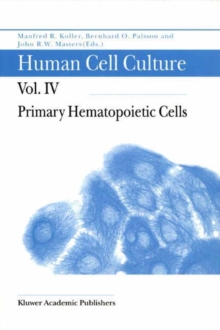
Cancer Cell Lines Part 2 PDF
Edited by John Masters, Bernhard o Palsson
Part of the Human Cell Culture series
Description
Continuous cell lines derived from human cancers are the mostwidely used resource in laboratory-based cancer research.
The first 3 volumes of this series on Human Cell Culture are devoted to these cancer cell lines.
The chapters in these first 3 volumes have a common aim.
Their purpose is to address 3 questions offundamental importance to the relevanceof human cancer cell lines as model systems of each type of cancer: 1.
Do the cell lines available accurately represent the clinical presentation? 2. Do the cell lines accurately represent the histopathology of the original tumors? 3. Do the cell lines accurately represent the molecular genetics of this type of cancer?
The cancer cell lines available are derived, in most cases, from the more aggressive and advanced cancers.
There are few cell lines derived from low grade organ-confined cancers.
This gap can be filled with conditionally immortalized human cancer cell lines.
We do not know why the success rate for establishing cell lines is so low for some types of cancer and so high for others.
The histopathology of the tumor of origin and the extent to which the derived cell line retains the differentiated features of that tumor are critical.
The concept that a single cell line derived from a tumor at a particular site is representative oftumors at that site is naive and misleading.
Information
-
Download - Immediately Available
- Format:PDF
- Publisher:Springer Netherlands
- Publication Date:11/04/2006
- Category:
- ISBN:9780306468612
Information
-
Download - Immediately Available
- Format:PDF
- Publisher:Springer Netherlands
- Publication Date:11/04/2006
- Category:
- ISBN:9780306468612










